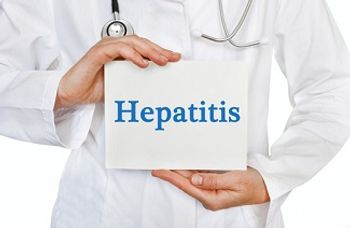
- Contagion, October 2020 (Vol. 05 No. 05)
- Volume 05
- Issue 05
Early Experience With the BioFire Pneumonia Panel
A balance between antimicrobial stewardship and the search for multidrug-resistant organisms.
The past decade has seen the introduction and increased use of multiplex polymerase chain reaction (PCR) panels by clinical microbiology laboratories for rapid detection of pathogens in blood cultures, cerebrospinal fluid (CSF), stool, and respiratory tract specimens. Adoption of rapid PCR panels for positive blood cultures has been particularly widespread, and antimicrobial stewardship programs at many institutions perform audit and feedback based upon the results of such panels as a basis for interventions with providers.1 In addition to blood culture and meningitis/encephalitis panels, the Nebraska Medicine Antimicrobial Stewardship Program now reviews results of a new Pneumonia Panel produced by BioFire Diagnostics.
Unlike previously available respiratory panels, which detect almost exclusively viral pathogens, the Pneumonia Panel tests specimens from the lower respiratory tract (sputum, endotracheal aspirate, and bronchoalveolar lavage) and detects a number of bacterial targets and associated antibiotic resistance genes in addition to viral pathogens (Table 1). As such, it provides additional opportunities for stewardship interventions but also poses some unique challenges. Many of these challenges stem from the fact that the respiratory tract, unlike the blood and CSF, is not a sterile site, meaning that not every organism detected is clinically significant, and the relative abundance of different species is an important part of the microbiological work-up. Results for the bacterial targets on the Pneumonia Panel are semiquantitative; copy number is reported as being not detected, 104, 105, 106, or ≥10.7 This imitates the semiquantitative reporting used by most laboratories for cultures, but the results are not generally concordant, and copies of DNA detected are not well correlated with bacterial colonies per mL. In polymicrobial specimens, the relative abundance does seem to correlate, with the highest copy numbers usually corresponding to the most common organism found. In our experience, organisms for which fewer than 106 copies are detected are often not found by culture. Results with low copy numbers may represent colonization rather than infection, or the presence of nonviable organisms after exposure to antimicrobial therapy. We recommend that the panel only be performed once on each type of sample, so we have little experience with interpreting results from subsequent tests while on or off therapy.
The increased sensitivity of this PCR diagnostic tool over standard culture creates several difficulties related to interpretation, which have been noted in the literature.2-7 These difficulties include increased likelihood of identifying colonizing organisms present in low numbers that are not causing infection; detection of multiple organisms or organisms that are not identified on culture; and semiquantitative results that are higher than what would be detected on culture and therefore difficult to interpret. Despite these difficulties, the Pneumonia Panel has shown potential for facilitating rapid identification of organisms and resistance genes, providing results in approximately 75 minutes.3 This may lead to earlier initiation of appropriate therapy, prompt discontinuation of broad-spectrum empiric therapy, or rapid deescalation to targeted therapy.2-6 Our experience thus far with the Pneumonia Panel is discussed here.
The Pneumonia Panel was implemented at Nebraska Medicine in May 2020, in the midst of the coronavirus disease 2019 (COVID-19) pandemic. It does not currently have SARS-CoV-2 as a target, although the respiratory pathogen panel does now include it. Ordering has been restricted to the intensive care unit and the pulmonary/critical care or infectious diseases teams. An
In our experience, community-acquired pathogens are commonly identified, likely due to the relatively large proportion of Pneumonia Panels ordered for patients with COVID-19 near the time of admission. Similar to the staffs of other facilities that have studied the panel, we have found that Staphylococcus aureus and Haemophilus influenzae are the most commonly identified organisms, followed by Klebsiella pneumoniae and Pseudomonas aeruginosa.2,3,5-7 Given the timing of our implementation and potentially ongoing COVID-19 prevention efforts, few respiratory viruses have been identified to date, with positive results consisting exclusively of rhinovirus/enterovirus. Several positive panels have detected 3 to 5 bacterial targets; however, in these situations, most organisms are detected at low quantities with 1 species predominating. A handful of exceptions have occurred, with 1 notable case in which 5 organisms (H influenzae, M catarrhalis, S aureus (mecA+), S pneumoniae, and S agalactiae) were detected in quantities ≥106 copies/mL in a patient previously treated with steroids. All of these organisms were subsequently isolated on culture and the patient was treated with antimicrobial therapy active against all identified organisms.
The Pneumonia Panel also qualitatively reports detection of resistance genes found in organisms typically causing pneumonia (Table 1); however, resistant organisms are not always identified by culture of specimens in which the Pneumonia Panel detected the presence of a resistance gene, suggesting that the resistance gene may have been present in a nonpathogen or low-abundance organism.2,3,6 Thus far, only mecA/C and CTX-M have been identified at our institution. In these instances, we recommended antimicrobial therapy to target MRSA or ESBL organisms. Whether this is always appropriate is uncertain: If the organisms carrying the resistance gene are not isolated on culture, patients may be exposed to unnecessarily broad antimicrobial therapy based on the PCR finding. When a resistance gene is detected on the Pneumonia Panel but does not grow on culture, we believe this warrants consideration of deescalation to therapy that targets only the organisms detected by culture.
Net effects of the Pneumonia Panel on antimicrobial stewardship at our institution are thus far unknown, although research is forthcoming. The increased sensitivity of the panel sometimes leads to specific organism detection despite growth of only normal respiratory flora on culture. For antimicrobial stewardship, this could be a detriment (eg, team decides to treat an organism when they ordinarily would have stopped antibiotics) or a benefit (eg, team narrows therapy to target the organism when they ordinarily would have continued broad coverage), and only time and experience with the panel will tell. At Nebraska Medicine, the Pneumonia Panel has been recommended only for use in patients with severe community-acquired pneumonia (CAP) or CAP patients on expanded-spectrum therapy, patients with hospital-acquired or ventilator-associated pneumonia, or patients who are not improving despite receiving typical empiric therapy. By targeting these populations, we anticipate a reduction in broad-spectrum therapy based on Pneumonia Panel results. We are particularly hopeful that implementation of the PCR Pneumonia Panel will facilitate a reduction in vancomycin and anti-Pseudomonal agent use. It also has the potential to allow rapid expansion of therapy to antibiotics that better target resistant organisms when resistance genes are detected (eg, KPC), or to prevent escalation of therapy that might have otherwise been prescribed, based on the fear of resistant organisms, when resistance genes are not detected.
During the COVID-19 pandemic, many providers order the Pneumonia Panel on patients positive for SARS-CoV-2 to detect secondary bacterial pneumonia and prescribe antibiotics accordingly. In patients with severe COVID-19 pneumonia, it has been more difficult to convince treatment teams to discontinue antibiotics based on negative PCR results, even when culture results are concordant, because of the prolonged respiratory failure and clinical instability common in this population. However, positive Pneumonia Panel results have been helpful for providing a basis to narrow therapy and decrease exposure to broad-spectrum antimicrobials.
The implications of the Pneumonia Panel on antimicrobial stewardship, resource utilization, and clinical outcomes have not yet been determined. As provider experience with interpretation of Pneumonia Panel results grows, we are hopeful that it will be a valuable tool to help optimize antimicrobial therapy for hospitalized patients with severe pneumonia.
Miller is a PGY2 infectious diseases pharmacy resident at Nebraska Medicine.
Creager is a second-year clinical microbiology fellow at the University of Nebraska Medical Center.
Watkins is an antimicrobial stewardship outreach pharmacist at Nebraska Medicine and pharmacy coordinator for the Nebraska Antimicrobial Stewardship Assessment and Promotion Program.
Stohs is associate medical director of the antimicrobial stewardship program at Nebraska Medicine, and an assistant professor in the Department of Internal Medicine, Division of Infectious Diseases, at the University of Nebraska Medical Center College of Medicine.
Van Schooneveld is medical director of the antimicrobial stewardship program at Nebraska Medicine, and an associate professor and fellowship director in the Department of Internal Medicine, Division of Infectious Diseases, at the University of Nebraska Medical Center College of Medicine.
Bergman is pharmacy coordinator of the antimicrobial stewardship program and PGY2 infectious diseases pharmacy residency program director at Nebraska Medicine. He is also a clinical associate professor in the Department of Pharmacy Practice and Science at the University of Nebraska Medical Center College of Pharmacy. He is incoming president-elect of the Society of Infectious Diseases Pharmacists.
References
- Banerjee R, Teng CB, Cunningham SA, et al. Randomized trial of rapid multiplex polymerase chain reaction-based blood culture identification and susceptibility testing. Clin Infect Dis. 2015;61(7):1071-1080. doi:10.1093/cid/civ447
- Lee SH, Ruan S-Y, Pan S-C, et al. Performance of a multiplex PCR pneumonia panel for the identification of respiratory pathogens and the main determinants of resistance from the lower respiratory tract specimens of adult patients in intensive care units. J Microbiol Immunol Infect. 2019;52(6):920-928. doi:10.1016/j.jmii.2019.10.009
- Murphy CN, Fowler R, Balada-Llasat JM, et al. Multicenter evaluation of the BioFire FilmArray Pneumonia/Pneumonia Plus Panel for detection and quantification of agents of lower respiratory tract infection. J Clin Microbiol. 2020;58(7):e00128-20. doi:10.1128/JCM.00128-20
- Buchan BW, Windham S, Balada-Llasat JM, et al. Practical comparison of the BioFire FilmArray Pneumonia Panel to routine diagnostic methods and potential impact on antimicrobial stewardship in adult hospitalized patients with lower respiratory tract infections. J Clin Microbiol. 2020;58(7):e00135-20. doi:10.1128/JCM.00135-20
- Yoo IY, Huh K, Shim HJ, et al. Evaluation of the BioFire FilmArray Pneumonia Panel for rapid detection of respiratory bacterial pathogens and antibiotic resistance genes in sputum and endotracheal aspirate specimens. Int J Infect Dis. 2020;95:326-331. doi:10.1016/j.ijid.2020.03.024
- Webber DM, Wallace MA, Burnham CA, Anderson NW. Evaluation of the BioFire FilmArray Pneumonia Panel for detection of viral and bacterial pathogens in lower respiratory tract specimens in the setting of a tertiary care academic medical center. J Clin Microbiol. 2020;58(7):e00343-20. doi:10.1128/JCM.00343-20
- Edin A, Eilers H, Allard A. Evaluation of the Biofire Filmarray Pneumonia panel plus for lower respiratory tract infections. Infect Dis (Lond). 2020;52(7):479-488. doi:10.1080/23744235.2020.1755053
Articles in this issue
almost 5 years ago
Afabicin: A Novel, Narrow-Spectrum, Antistaphylococcal Agentabout 5 years ago
The Preexposure Prophylaxis Pipelineabout 5 years ago
Benefits of ID Consultation and ASP Collaborationabout 5 years ago
COVID-19 Vaccination: Prepare to EngageNewsletter
Stay ahead of emerging infectious disease threats with expert insights and breaking research. Subscribe now to get updates delivered straight to your inbox.

















































































































































































































































































